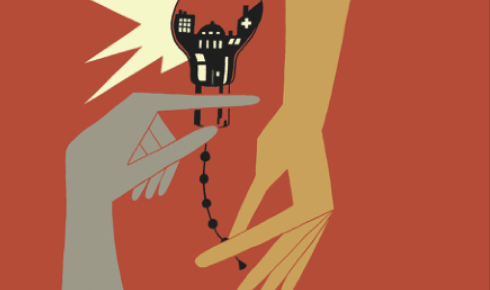
For more than 30 years, the public sector has focused on delivering public services more efficiently. Rationalization efforts, productivity campaigns and spending cuts have replaced the postwar expansion of public sector. Years of cost saving have eliminated the slack in public service organizations, and further cuts in public expenditure are likely to hurt public employees, reduce service quality and erode the political and professional capabilities of public authorities. Yet the demand for high quality public services are equally unrelenting.
To maintain its high ambitions on behalf of society and the economy, the public sector must create a new interface with society that can stimulate innovation and tap into societal resources while building common ownership for new and bold solutions to public problems. Co-creation offers an attractive way forward for cash-strapped public organizations facing complex societal challenges. By involving relevant and affected actors in collaborative processes of creative problem solving, co-creation departs from both traditional forms of hierarchical government and newer forms of market-driven governance.
Co-creation is not entirely new. The co-production of services is a long-standing and elemental form of citizen engagement. When school kids do their homework, post-surgery patients do their prescribed knee-strengthening exercises, taxpayers fill out and submit their tax returns, or citizens volunteer in the fire brigade, they are co-producing public services.
Many examples can also be found where the public sector has deliberately engaged citizens in efforts that go beyond go “co-production” of services: lead users and frontline personnel have been engaged in efforts to reform entire service systems to make them more effective and user-friendly; planners, developers and the police have worked with neighborhoods to develop strategies for urban regeneration and crime prevention; and public and private stakeholders have joined together to formulate and implement new policies and regulatory frameworks in response to pressing societal problems.
Still more ambitiously, co-creation could become a core governance principle for the public sector. By systematically envisioning opportunities for public value creation through cross-boundary collaboration, co-creation has the potential to enhance the design and implementation of new and creative solutions based mutual learning, empathetic evaluation of needs, and the development and testing of prototypes.
Elevating the status of co-creation from service co-production or one-off experiments with collaborative governance to a core principle for governing modern societies completely transforms our understanding of its role and nature. From its former status as an almighty ‘public authority’ or efficient ‘service provider’, the public sector becomes a ‘platform and arena for co-creation’.
As a core principle of public governance, co-creation can do more than help us escape the crossfire between pressing societal problems and scarce public resources. It can create opportunities for a new type of public participation. Elected politicians increasingly demand input from citizens and society in order to better understand the problems at hand and design solutions that work in practice. Public managers and employees realize that their professional ambitions require active involvement of citizens and stakeholders. Most importantly, increasingly competent, critical and assertive citizens demand more active and direct participation in shaping their own living conditions than liberal representative democracy can offer. Co-creation responds to these demands for a more direct and constructive democratic engagement.
The COVID-19 pandemic brings these concerns and opportunities to the fore. Contrary to the well-known tendency for crisis and turbulence to stimulate centralized decisionmaking and top-down governance, the pandemic surfaced many examples of cross-boundary collaboration: frontline personnel joined together with clients to discover innovative service-delivery solutions; public agencies worked with private companies, interest organizations and professional associations to produce needed supplies and services; citizens, third-sector organizations and neighborhoods worked with cities and public health authorities to meet local needs for care and protection. Against a tragic background, the pandemic has illuminated the potential to deepen and extend co-creation.
Co-creation is not a luxury. Learning to collaborate in more powerful ways to produce innovative solutions to pressing problems is vital to the survival of humankind. The United Nation claims that we can only attain the Sustainable Development Goals if we work together in partnerships and networks to co-create innovative solutions that enjoy broad based support.
Latest Comments
Have your say!